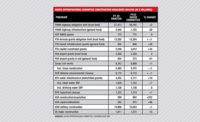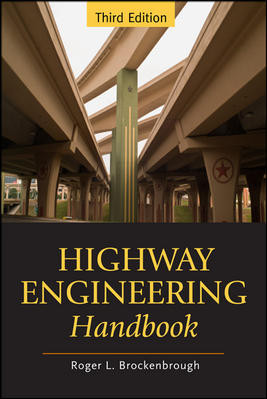Infrastructure Funding
Senate Spending Bills Win Praise From State DOTs and Industry

Graphic by Scott Hilling/ENR Art Dept.
In a burst of summer legislative activity, the Senate Appropriations Committee has approved 11 of the 12 spending bills on its to-do list for fiscal year 2025, each of which funds one or more federal departments or agencies.
The group of 11 bills includes funding for nearly all major construction and infrastructure programs. For such key categories as highways, transit, clean water and drinking water, industry and state officials like what they see in the Senate panel's spending measures.
State departments of transportation also were pleased that the bill funding U.S. DOT includes a potential “fix” for a problematic highway funding issue, but the measure's language on the topic probably won’t be the Senate's last word on the matter.
Overall, infrastructure advocates praise Senate Appropriations Chair Patty Murray (D-Wash.) and the panel’s top Republican, Susan Collins (R-Maine), for working jointly to get the bills approved unanimously or by wide bipartisan margins.
During the Senate panel’s July 25 voting session on several spending measures, including the one funding DOT, Murray said, “We are moving ahead with strong bipartisan bills that can actually be passed and signed into law.”
Sean O’Neill, Portland Cement Association senior vice president, says that the Senate committee's bipartisan approach also "is an indicator of where [funding levels] may end up eventually, if and when we have a full funding bill in place.”
The across-the-aisle approach provides a sharp contrast with the House Appropriations Committee, which had approved all 12 of its 2025 bills earlier, but along party lines and with partisan disagreements.
Both committees are in synch, however, on some key DOT programs. Both committees' bills recommend $61.3 billion for the federal-aid highway obligation limit, in line with the level in the Infrastructure Investment and Jobs Act (IIJA) and a 2% increase from this year's enacted level.
Similarly, both bills stick to the IIJA level for transit formula funds, recommending $14.3 billion, up 2% from this year. Those programs draw from the Highway Trust Fund.
Moreover, the House and Senate measures recommend $4 billion in 2025 for Federal Aviation Administration airport improvement program grants, up 19% from 2024. The grants are supported by the Airport and Airway Trust Fund.
The Senate panel’s numbers for other transportation budget accounts are far apart. For example, the senate committee proposes $345 million for DOT’s popular RAISE grants program, up 59% from this year’s enacted level.
But House appropriators zeroed out RAISE, which stands for Rebuilding American Infrastructure with Sustainability and Equity.
The House panel slashed FTA's Capital Investment Grants by 66%, to $755 million. But the Senate committee approved a 3% hike.
August Highway Funding Change
The American Association of Highway and Transportation Officials (AASHTO) also was pleased to see that the Senate DOT bill includes a provision that aims to address a problem state DOTs have had for the past several years with the Federal Highway Administration’s annual August redistribution of certain types of unspent highway funds.
When August rolls around, the Federal Highway Administration reallocates the unobligated funds to states that can use the aid, but states have regularly had to scramble to obligate the redistributed funds within a period of just 30 days.
Jim Tymon, AASHTO's executive director, said in a statement, "The solution in this bill should reduce the amount of funding subject to August redistribution and provide more of the state formula dollars at the beginning of the fiscal year, allowing states to adequately plan out projects to best serve the needs of their communities.”
But the Senate appropriation bill’s language dealing with the August redistribution may not be the last word on the subject.
During the committee's July 25 voting session, panel member Sen. Shelley Moore Capito (R-W.Va) said the fiscal 2025 spending bill provision is “a Band-Aid,” adding that she is working on a legislative change.
Moreover, transportation subcommittee Chair Brian Schatz (D-Hawaii) said he would work with Capito and other senators on the issue. “This is a real issue,” Schatz said.
He added with all of the new transportation projects and programs under the IIJA, “We are having some difficulty in actually deploying the resources that we appropriated. And that’s not an imaginary problem.”
In another infrastructure category, the Environmental Protection Agency's water infrastructure program, the Senate Appropriations Committee approved its version of the EPA/Interior Dept. spending bill on July 25 by a bipartisan 28-1 vote. It holds 2025 funding flat for the State Revolving Fund (SRF) program at $2.76 billion, the same as the 2024 enacted level. It also increases funding for the Superfund program by $546 million over this year's enacted levels.
Mae Stevens, CEO of the The American Business Water Coalition, praised the Senate for maintaining SRF funding levels and avoiding cuts, but adds that "there is still so much work to be done to close the extreme funding gap for our country's water infrastructure."
Stevens said in a statement that according to the American Water Works Association, it will take at least $1 trillion over 25 years to restore water systems to meet population and regulatory needs.
Among other construction programs, House and Senate committees both would more than double Dept. of Veterans Affairs major construction projects, to more than $2 billion.
The House panel recommends a 14% increase for military construction; the Senate committee calls for a 6% boost.
Even with the movement in committee on the 2025 spending measures, there is little time left before the Sept. 30 end of the 2024 fiscal year and a possible government shutdown. The uncertainties surrounding the November elections also make it likely that legislators will again turn to a stopgap continuing resolution, or CR, to keep federal agencies, including their construction programs, open.
O'Neill, says a CR that would extend beyond Nov. 5 is likely. "That's the sort of path we're going down," he says.






